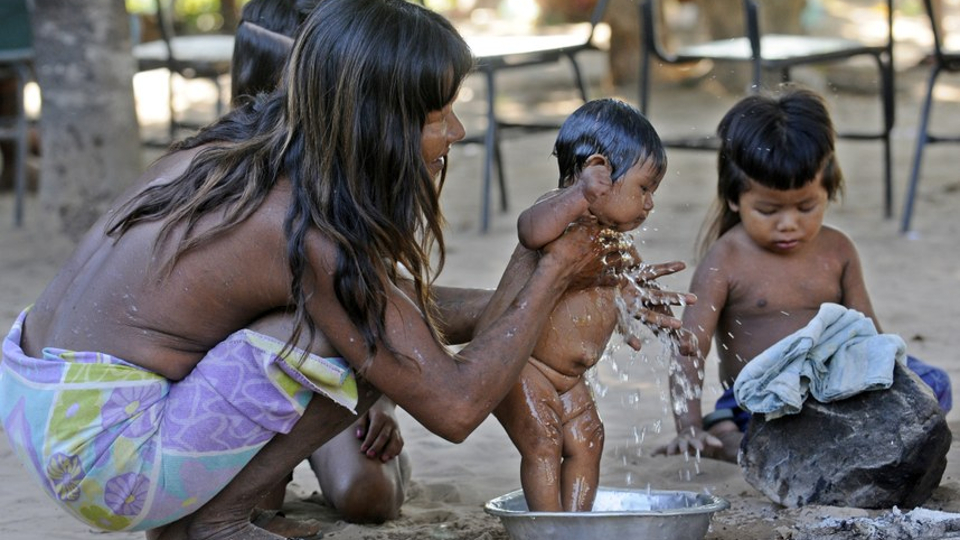Study by Cidacs/Fiocruz Bahia shows ethnic-racial impact on child development
29/02/2024
Larissa Costa (Cidacs/Fiocruz Bahia)
There are different parameters for assessing a child's development from birth, and weight and height gain is some of these factors. However, there are indirect influences that act on this factor of development. This is what a new study published by researchers from the Center for Data and Knowledge Integration for Health (Cidacs/Fiocruz Bahia) points out. The research findings suggest that the ethnicity/color of pregnant women affects the weight gain and growth trajectory of their children. In particular, the study warns of greater inequality concerning the child development of the children of indigenous women.
Published in the journal BMC Pediatrics, the research found that children of indigenous mothers had higher rates of short stature for age (26.74%) and low weight for age (5.90%). Characteristics of thinness were more prevalent among children born to brown and black mothers (5.52% and 3.91%, respectively), indigenous people (4.20%) and people of Asian descent (5.46%), compared to children born to white women (3.91%).
The incidence of patterns of short stature for age and low weight among the children of women from different ethnic-racial groups was also assessed. According to the results, the prevalence rate of these issues was higher among children born to indigenous mothers (26.71% and 5.90%), followed by children born to brown women (11.82% and 3.77%) and mothers of Asian descent (10.99% and 3.64%), black mothers (10.41 and 3.48%), and among white women (8.61% and 2.48%).
Overall, the findings of the research team show how a pregnant woman's social vulnerability can affect the development of her children. For Helena Benes, first author of the article, these rates "can be attributed to a series of factors resulting from the persistent impact of structural racism in our society," she comments. "Racism can influence everything, from unequal access to work and education opportunities, to the level of stress faced in different communities. As long as government and public health measures to eliminate racism are not sufficient, we will continue to see its harmful effects, including on children's growth."
Other results
The study used data from the Cidacs/Fiocruz Bahia Birth Cohort – which currently has information on more than 28 million live births in Brazil – linked to data from the Food and Nutrition Surveillance System (SISVAN). In total, information on 4,090,271 children born between January 2003 and November 2015, whose development was monitored between 2008 and 2017, was evaluated.
Of the total group of more than 4 million children analyzed in the studies, 64.33% were children of brown mothers, 30.86% of white mothers, 3.55% of black mothers, 0.88% of indigenous mothers and 0.38% of mothers of Asian descent. In order to assess the racial factor, the group of children born to white women was used as a reference category for the other groups. First, a descriptive analysis was carried out considering the characteristics of each ethno-racial group, in order to assess the frequency of each factor analyzed in the trajectory of child growth – short stature and low weight for age and thinness.
Non-linear mixed effects models were then applied to estimate the trajectory of weight and height in the children of each group from birth to five years of age. The results obtained when applying this model indicated that the children of indigenous mothers were, on average, 3.3 cm shorter than those born to white mothers. Children of brown mothers also had a lower average height (0.60 cm less), followed by those born to black mothers (0.21 cm less) and those of Asian descent (0.39 cm less).
"Although scientific literature has already widely discussed how racism impacts negative outcomes at birth, such as prematurity and low birth weight, few studies have delved into the impact of racism on the growth of Brazilian children," says Helena about the importance of the research. "We seek to contribute to a longitudinal analysis of child growth, allowing for detecting variations and better understanding the trajectory, since child growth is considered a reliable indicator of the quality of the environment in which they live and the quality of life," she adds.
With regard to the weight trajectory of children, compared to those born to white mothers, indigenous children weighed 740 grams less; followed by children of brown mothers (250 grams less); children of black mothers weighed 150 grams less, and children of Asian descent weighed 220 grams less.
Records of children with missing weight and height information, or with congenital anomalies (or no record of whether the child has these disabilities) were not taken into account.
Maternal vulnerability
The pregnant women who formed part of the corpus of analysis are also identified by other characteristics: most of these women were residents of urban areas (except for indigenous women, 73.83% of whom lived in rural areas), and lived in housing conditions considered to be more precarious (30.04%).
Indigenous and black women had the lowest levels of education (27.52% and 13.76%, respectively). These women also had higher rates of incomplete prenatal care (67.44% for indigenous women and 47.02% for black women), followed by brown women (48.55%).
The research team points out that the trajectory of child growth was within the "normal" limits determined by the World Health Organization. "However, when evaluating the trajectories of each child within a socio-demographic group, children born to more socially vulnerable mothers showed less favorable characteristics," the researchers add.


